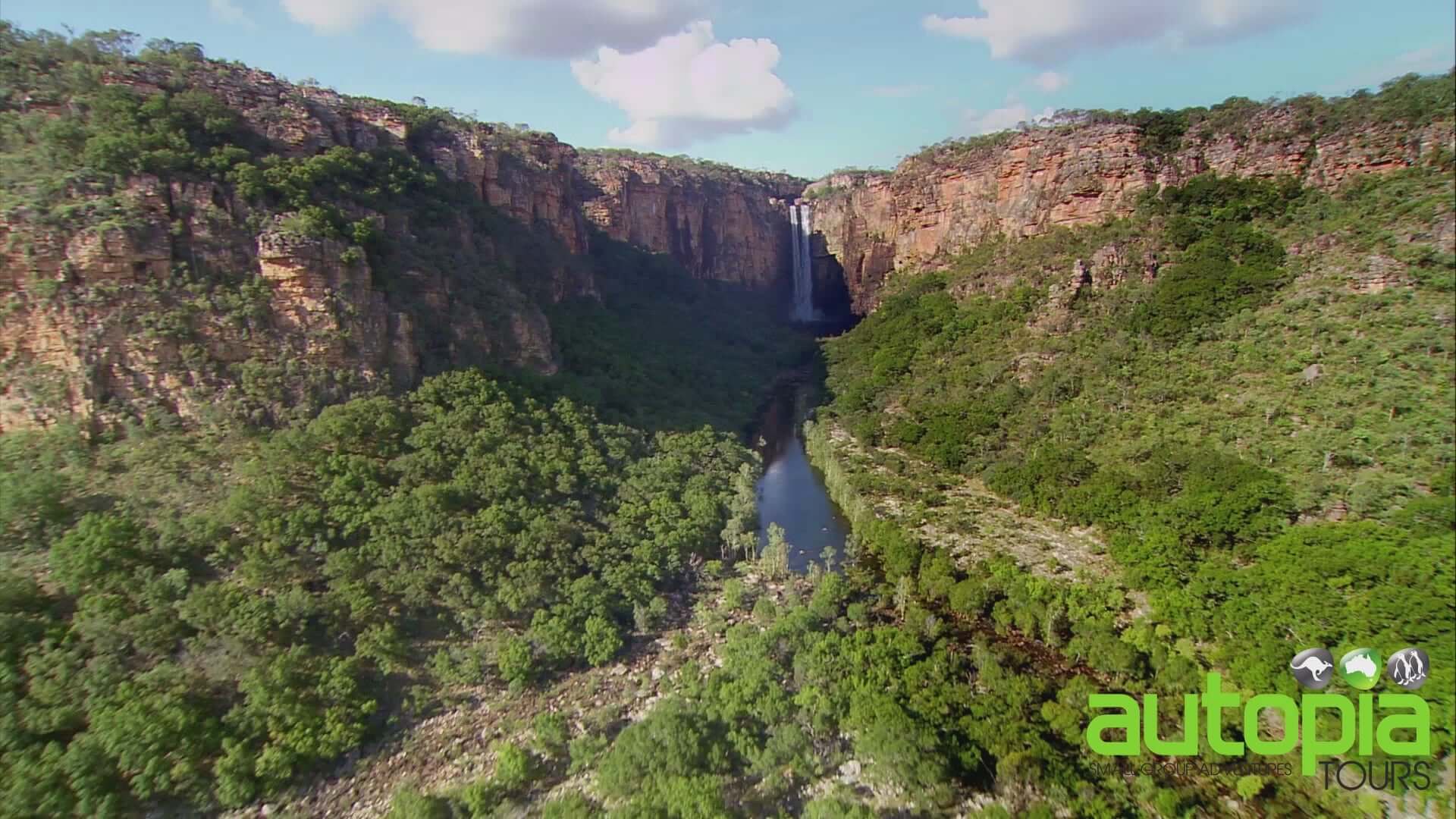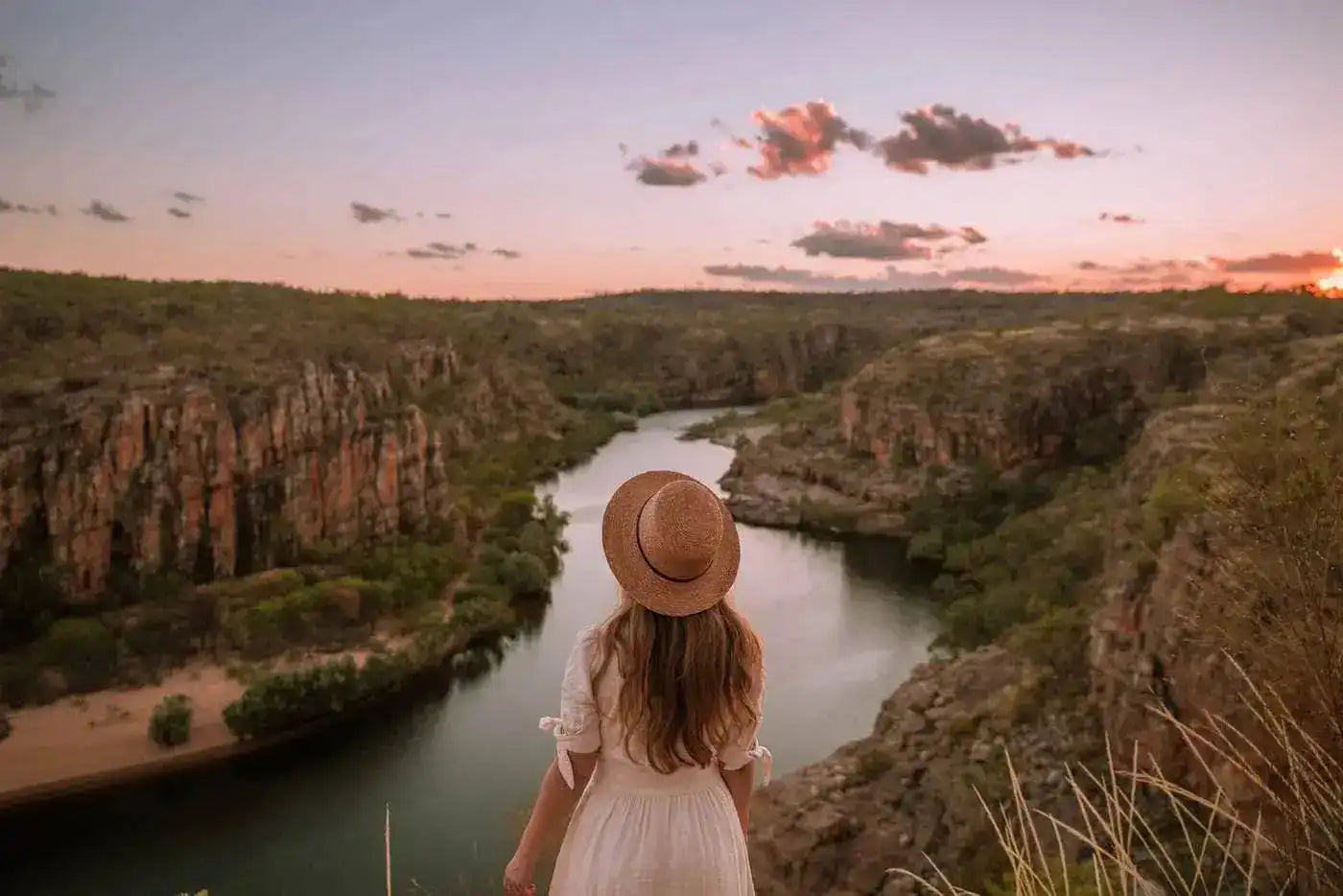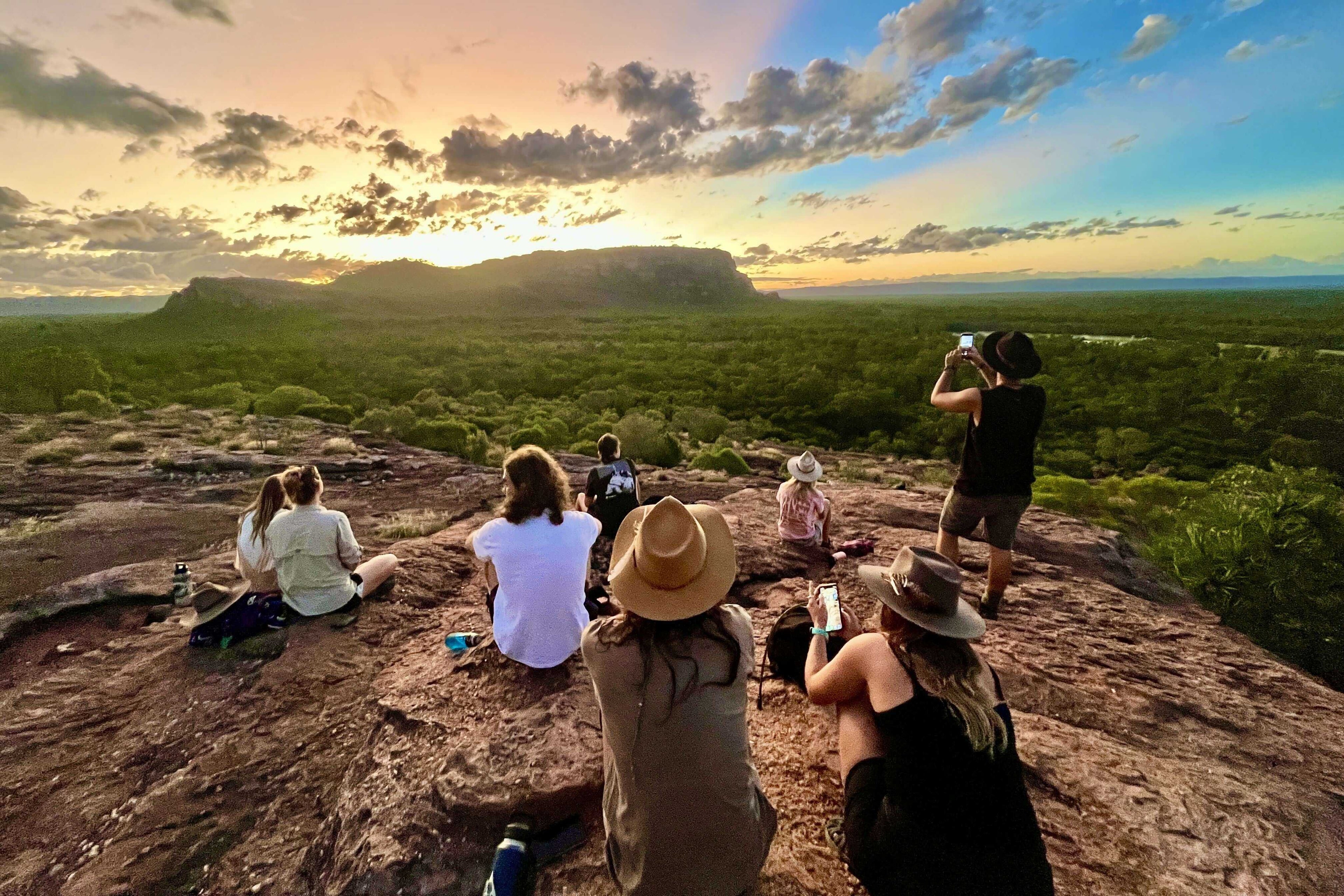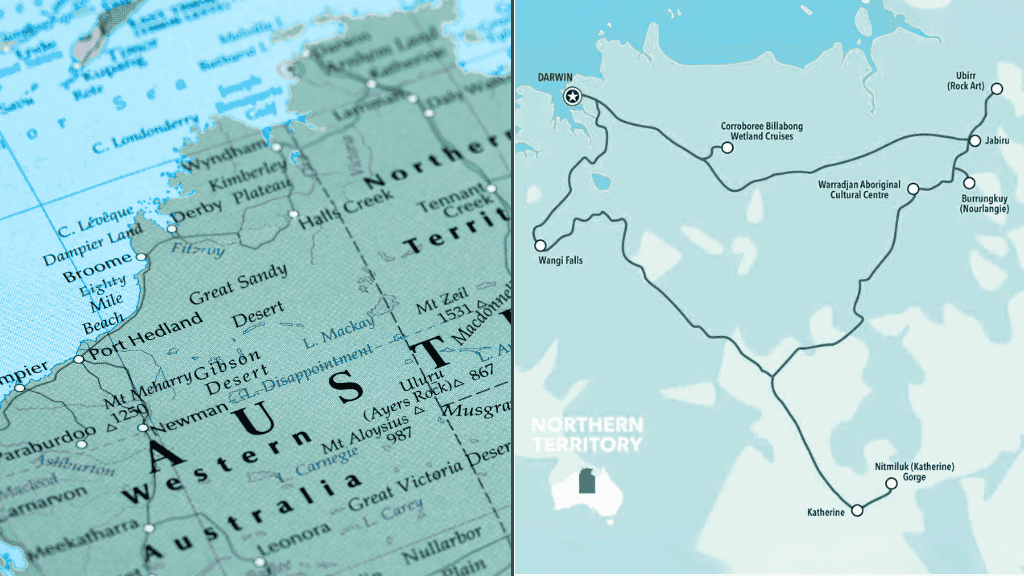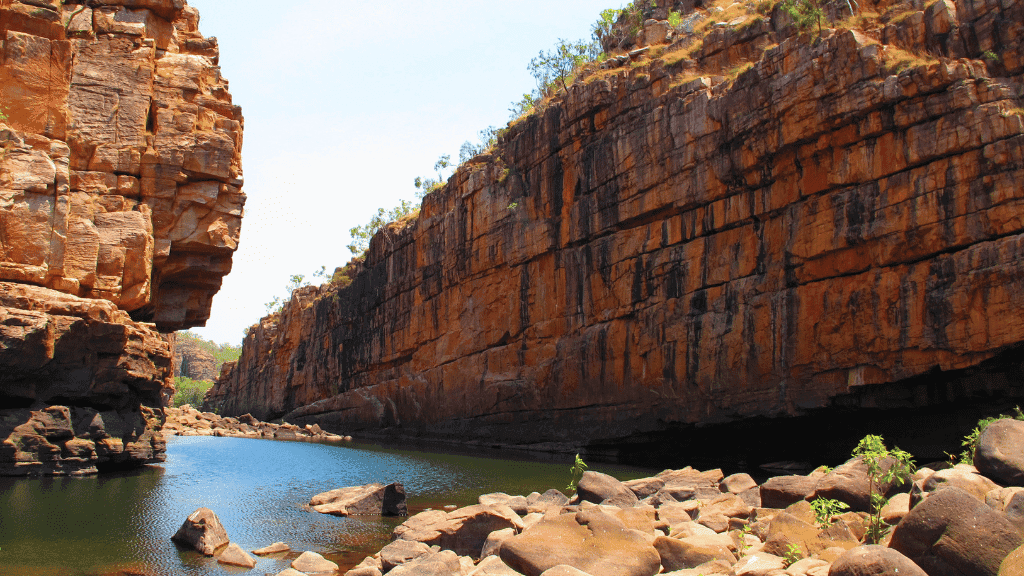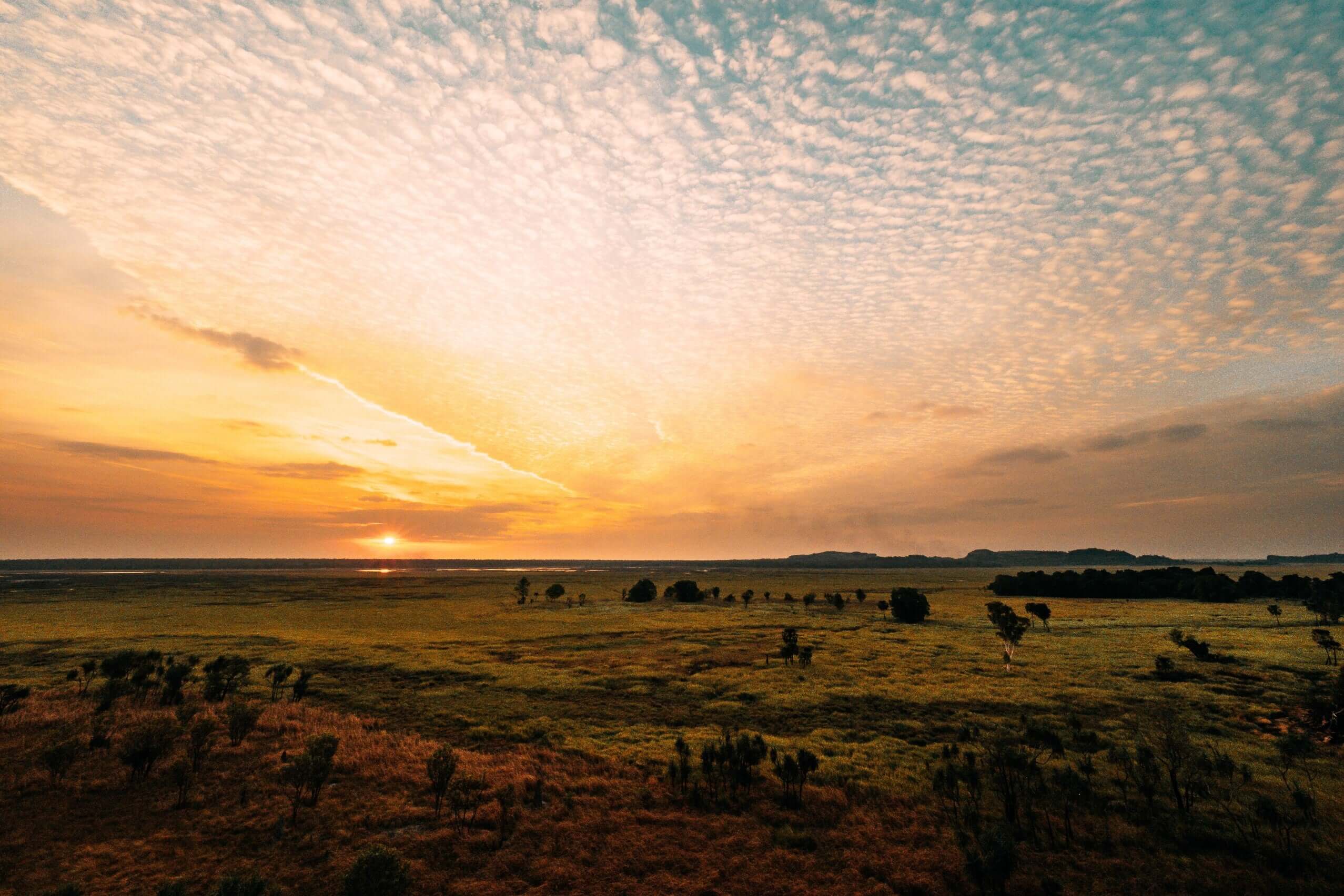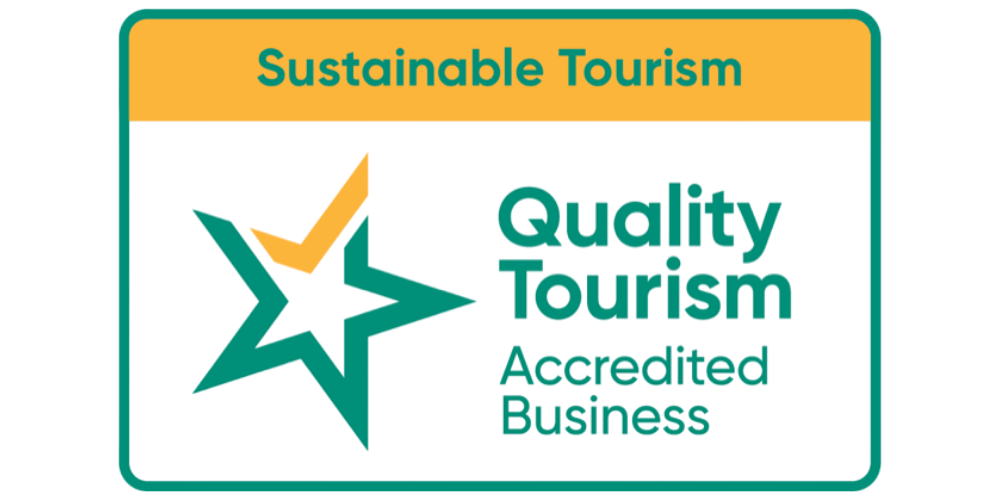Local Insights — Kakadu • Nitmiluk (Katherine Gorge) • Litchfield
Travel across the lands and waters of the Bininj/Mungguy (Kakadu), Jawoyn (Nitmiluk), and Koongurrukun, Mak Mak Marranunggu, Werat and Warray peoples (Litchfield). Culture leads—follow signage and local guidance at all times.
Big-picture snapshot
Three Top End icons in one sweep: World-Heritage wetlands and rock art (Kakadu), sandstone gorges and canoe country (Nitmiluk), and waterfalls made for swimming (Litchfield). Distances are large, services are sparse, and reception is patchy—top up fuel/water before leaving hubs and plan early starts to beat heat.
Seasons & climate (what actually changes)
- Dry Season (May–Oct): Most sites open; 4WD tracks generally passable; humidity drops; prescribed burns can create smoky horizons.
- Tropical Summer/Wet (Nov–Apr): Storms, flooding and site/road closures; waterfalls roar, but many tracks close on the ground.
- Coastal stingers: If adding Darwin beaches, box jellyfish risk peaks Oct–May—sea swimming is generally a no for that window.
Culture & conduct (essential respect)
- Sacred sites & rock art: Stick to tracks, observe no-photo zones, and follow rangers’ directions at places like Ubirr and Burrungkuy (Nourlangie).
- Drones: Kakadu — not permitted without an approved permit. NT parks (Litchfield/Nitmiluk) may allow with permits and CASA rules.
- Leave no trace on Country: Don’t touch rock art or disturb cultural artefacts; take only photos where allowed.
Passes & permits (plain English)
- Kakadu National Park Pass — required (time-limited).
- NT Parks Pass — required for Litchfield and Nitmiluk (separate to Kakadu).
Water, crocs & swimming (read this)
- In Kakadu, assume crocodiles near any natural water. Swim only where explicitly signed safe/open; when in doubt, don’t enter. Bring drinking water—don’t collect from waterways.
- Be Crocwise: Camp ≥ 50 m from water and ≥ 2 m above the high-water mark; when bank fishing, stand ≥ 5 m back; keep hands/feet out of the water; never clean fish at the water’s edge.
- Litchfield & Nitmiluk have designated swimming holes that open/close with conditions. Only swim at sites signed open that day.
Access & 4WD realities
- Kakadu’s Jim Jim & Twin Falls: High-clearance 4WD access in the Dry; in the Wet, best appreciated from the air. Always check the Kakadu Access Report before committing.
- Litchfield’s Reynolds River Track: Dry-season-only 4WD sector to Tjaynera (Sandy Creek), Surprise Creek and Blyth Homestead with water crossings.
- Nitmiluk canoeing: Seasonal; opens when crocodile management deems areas safe. Expect closures after heavy rain or during surveys.
Recommendations & local-style tips
Kakadu
- Yellow Water (Ngurrungurrudjba) sunrise cruise for crocodiles, jacanas and magpie geese—book ahead.
- Ubirr at sunset over floodplains; Burrungkuy (Nourlangie) to meet Namarrgon (Lightning Man) in the art.
- Mamukala Wetlands bird hide: huge dry-season spectacles with minimal effort.
Nitmiluk (Katherine Gorge)
- Canoe deep into the gorges when open; swap to a boat cruise or rim lookouts during closures.
- Leliyn / Edith Falls adds shaded swims and a loop walk when signed open.
Litchfield
- Buley Rockholes, Florence & Wangi Falls are the classic swims (only when signed open).
- Magnetic Termite Mounds: Arrow-straight, north–south aligned—best in low sun for texture.
Practical logistics
- Fuel & supplies: Top up at gateways like Jabiru/Cooinda, Katherine, Batchelor before long park drives.
- Heat & hydration: Walk early, cover up, and drink ≥ 1 L per person per hour in hot conditions; add electrolytes on longer hikes.
- Fire & smoke: Early-Dry planned burns are normal; smoke or temporary closures may affect views and flights.
- Connectivity: Expect black spots; download offline maps and leave a trip plan with a contact.
Zero Trace (do it right)
Pack out everything, stay on formed tracks, respect seasonal/cultural closures, secure food waste away from water and camp, and give wildlife space. Aim to leave places feeling untouched.

